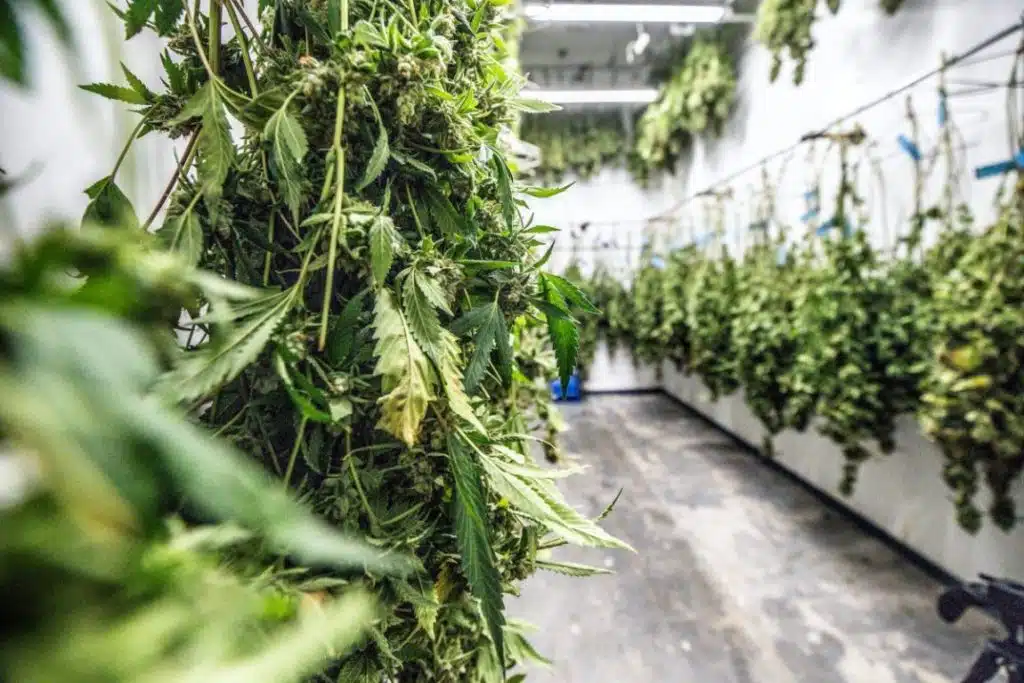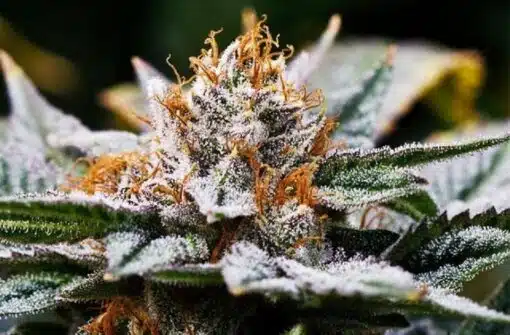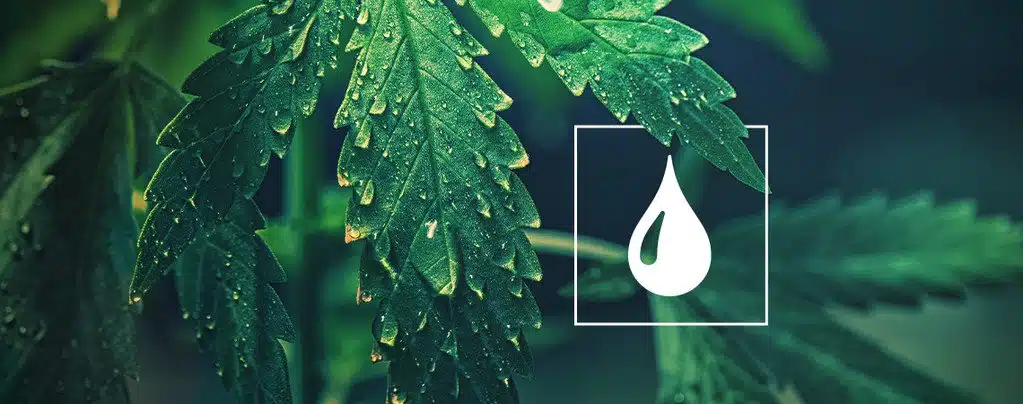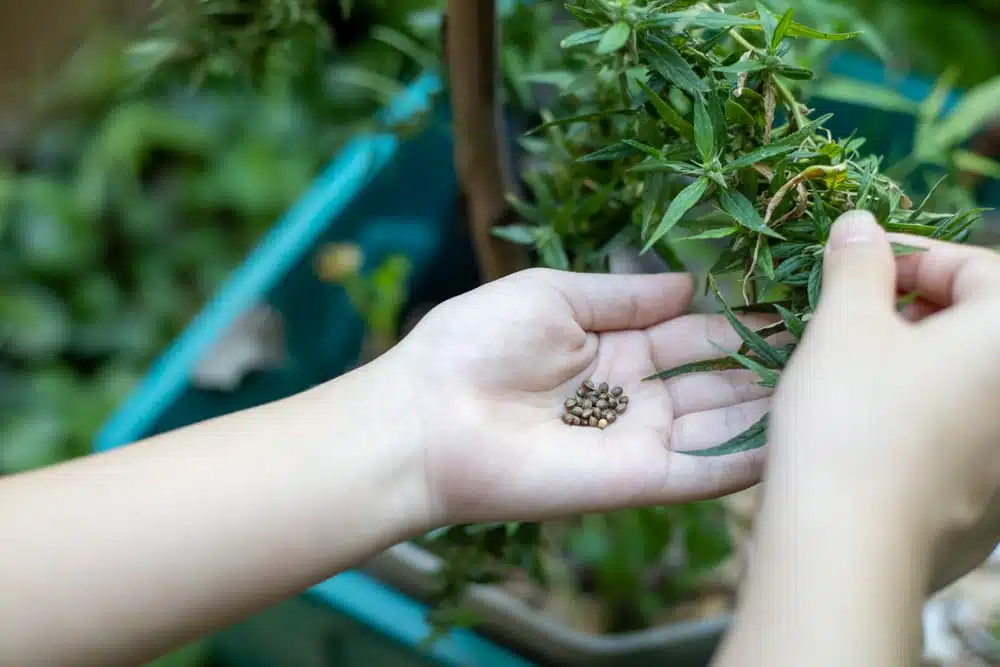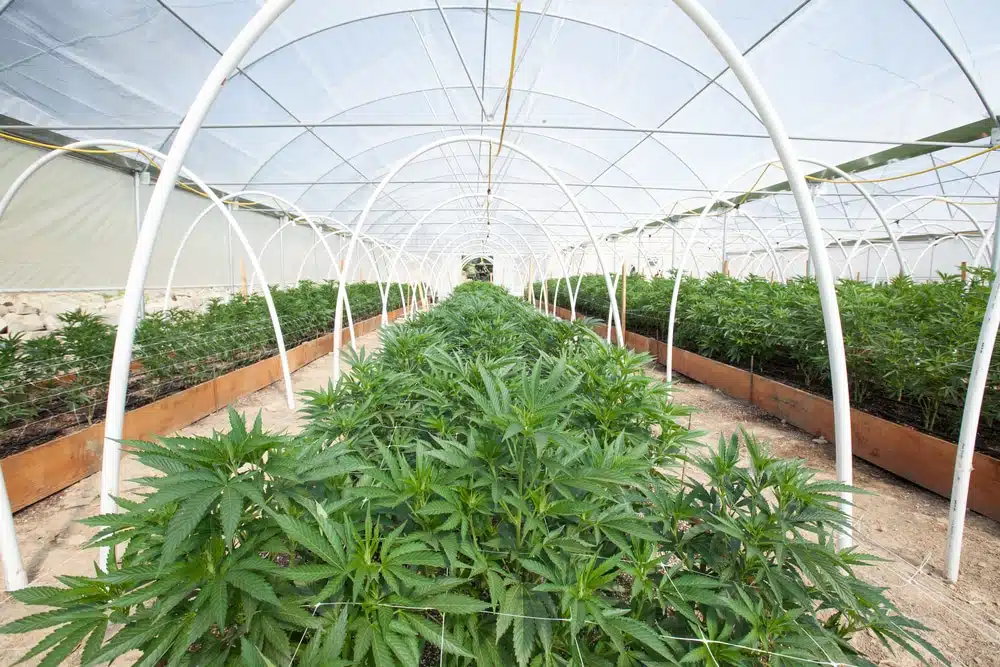Drying and Curing Cannabis for the Best Flavors and Effects
Drying and curing cannabis correctly is just as crucial as cultivating your crop. These processes ensure your buds are of the highest quality, potency, and flavor, and can make or break your hours of hard work.
Following the correct post-harvest techniques results in flowers that have a smoother smoke, better aroma, and more pronounced effects. Even seasoned marijuana growers can ruin their plants by skipping these essential steps.
You’re about to get the lowdown on how to perform weed drying and curing to guarantee perfect buds. We also give you more reasons about why the procedures are so important, and some practical tips on how to do them correctly.
Let’s get learning.
Drying cannabis
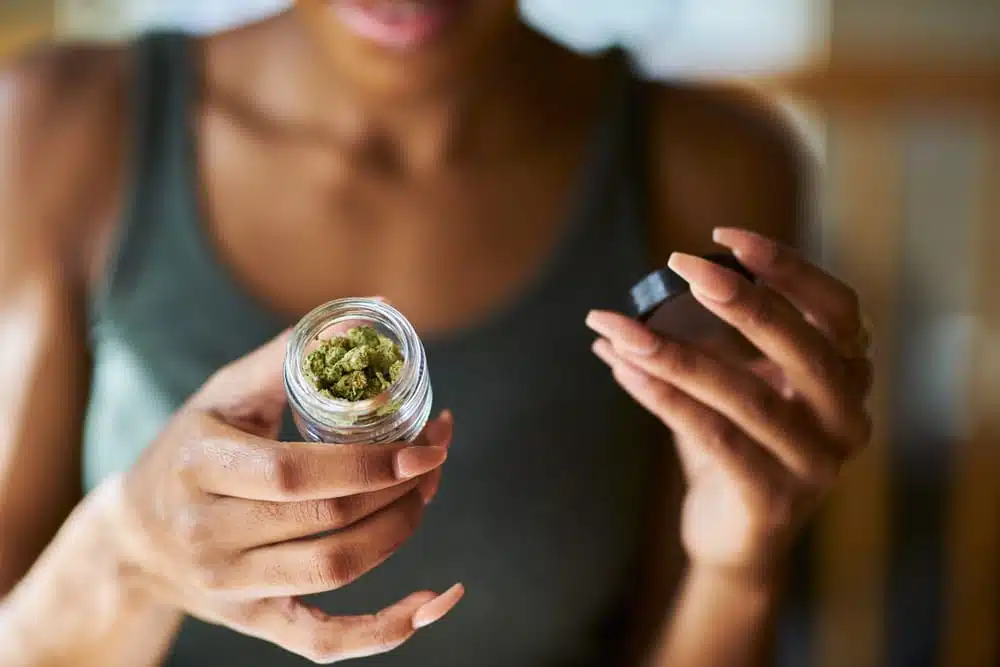
Drying cannabis removes excess moisture from freshly harvested flowers to prepare them for further processing or consumption.
Cultivators aim to eliminate around 10–15% of the buds’ H2O content during this step, depending on the desired final crispiness. The technique extracts water from the outer layers of each bloom and unwanted sugars that could cause burning in the throat.
To dry your marijuana properly, isolate it from heat, wind, and high humidity levels that could make the buds rot. The procedure should be slow and carefully regulated, as inconsistent conditions could produce dusty and fragile flowers.
You should also ensure no light enters the room, as it could affect the trichomes by converting tetrahydrocannabinol (THC) into cannabinol (CBN). This change destroys most of the weed’s psychoactive properties.
Pick a place that’s airy and warm, but not too hot, and have some patience. Be sure the room doesn’t stagnate to prevent the humidity rising and stopping the blooms from drying. Also check that air can move over them freely for even dehydration.
Check if your marijuana buds are dry by taking a small branch and trying to bend it. If it snaps, you’re ready to move on to curing. Should it curve, your blooms require further dehydration.
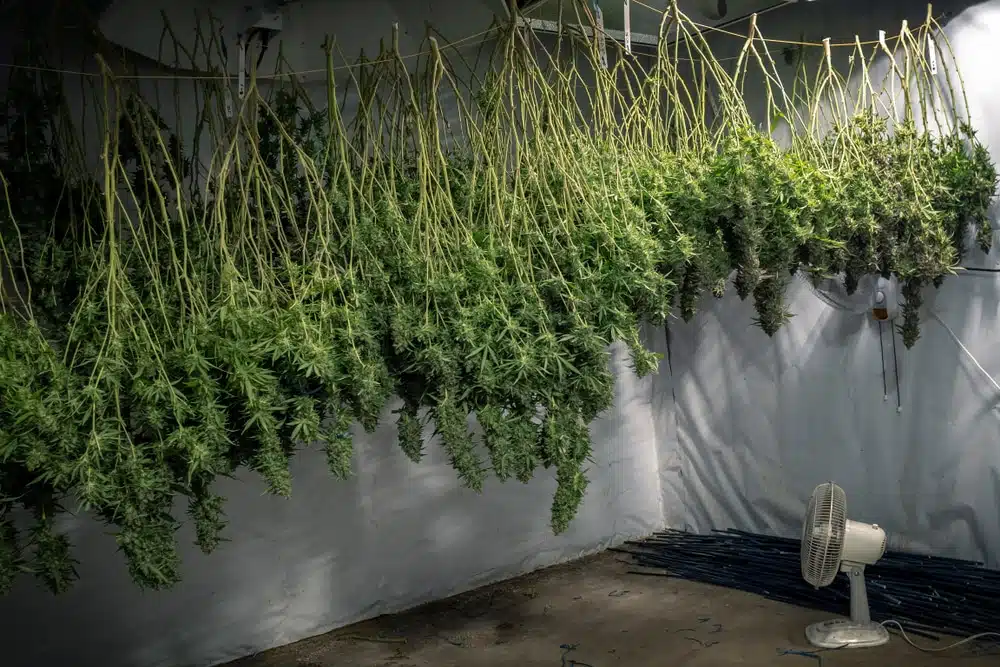
Reasons for drying cannabis
Freshly harvested cannabis is full of moisture, and flowers are too wet to provide a quality smoking experience. Drying your plants is essential to produce award-winning buds.
Completing the technique prevents mold, mildew, and bacteria from growing on your marijuana.
Moisture is a breeding ground for fungi and other harmful microorganisms, which ruin your blooms. Drying them properly removes excess water to prevent these pathogens from developing.
Dehydrated weed is also easier to roll into a joint. The crispy buds are simpler to handle than fresh, sticky ones and ensure easy trimming, grinding, and pouring.
Optimal conditions for drying
In an ideal setting, most of the moisture in your harvest should evaporate during the first three days. You should then slow down the process with a few adjustments.
To achieve the optimal dehydration-inducing conditions, ensure your room is at a temperature of 68ºF. The best humidity for drying weed is 55%, so you may require a hygrometer for monitoring. These values ensure your blooms reach a 30–40% water content.
Once your cannabis reaches this moisture level, drop the temperature to 64ºF to reduce the drying rate. This step is essential to use up the crop’s starches. Should your buds dehydrate too fast, the smoke could be bitter and leave a grassy aftertaste.
Observe the humidity of your room carefully, as a value below 50% forces water out of the flowers too quickly.
For a perfect taste, expect a duration of around 10–14 days long to dry your weed. Connoisseurs prefer a final H2O level of 8%. Keep in mind your buds will lose a lot of weight and shrink in size as water evaporates.
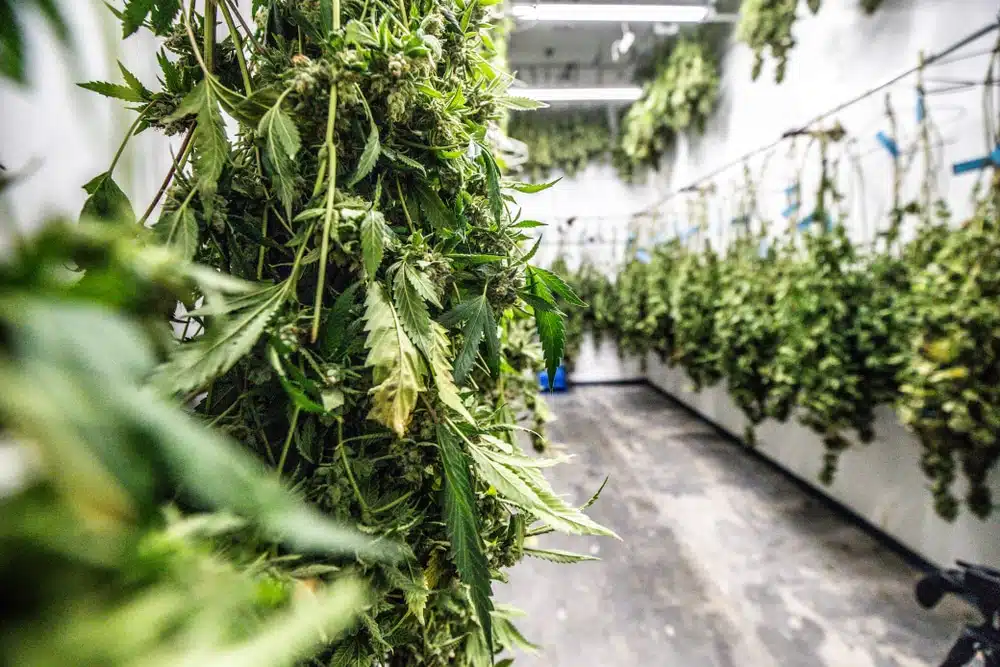
Different methods of drying
There are four trusted drying options that work for small-scale cannabis harvests:
- Climate-controlled box: This method involves dehydrating your buds in a wood, plastic, or cardboard container. Add a hygrometer connected to a small dehumidifier, and a thermostat-regulated air conditioner or heater.
- Paper packet: Drying weed in a brown paper bag is an easy way to maintain a higher moisture level around the flowers than in the room. An open or partially closed packet ensures smaller batches don’t dry out too quickly.
Place only three layers of buds in the bag and remove humidity with a fan should it exceed 50%.
- Hang drying: Place untrimmed marijuana upside down on a clothesline or rack to maximize airflow through the stems. Ensure the plants have enough space between them for water to evaporate.
- Closet: A small room or cupboard likely provides the ideal temperature for dehydration. Adjust the conditions by opening or closing the door and use an air conditioner or dehumidifier as required.
Common mistakes to avoid
Incorrect drying could ruin all the care you gave your cannabis plants during cultivation. Save your harvest and your sanity by avoiding these common errors:
- Having inadequate ventilation: Air inside your drying space should never be stagnant as it could slow moisture evaporation from the buds. Use a fan for circulation, but never point it directly at the plants.
- Drying in a room with growing crops: The conditions necessary for these two operations are incompatible, with the humidity in the space too high. You risk mold attacks and terpene loss.
- Using a closed container: Never dehydrate your flowers in an enclosed box or jar that traps air. Water vapor builds up and is likely to condense on the sides of the container, providing an ideal environment for bacteria.
- Not removing diseased plant parts: Carefully check each bud for mildew before placing it in your drying area. Should you dehydrate a bloom with a fungal infection, it could spread to the rest of your harvest.
- Allowing light to reach your buds: Strong rays could evaporate the terpenes and cannabinoids, making your flavors smell and taste like hay.
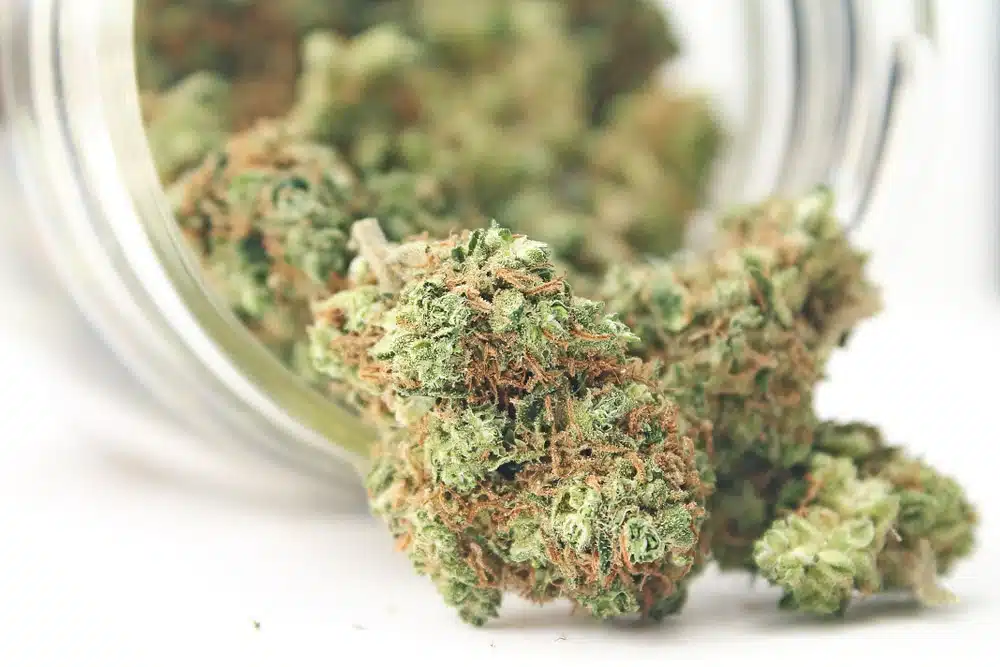 Curing cannabis
Curing cannabis
Curing is the end process of producing superb, flavorful buds. Many at-home growers often overlook this step, but it’s vital to ensure your cannabis reaches maximum potency.
It involves keeping your dried flowers inside air-tight jars. The air present breaks down the remaining chlorophyll taste, enhances terpene profiles, and degrades THC into cannabidiol (CBD).
Trim your blooms if necessary, then place them into large, wide-mouthed glass containers. Fill them around 75% of the way so there’s space for additional air and to reduce the risk of mold.
Store them in a dark, dry environment and check them daily for mildew for approximately two weeks. You should also “burp” your buds during each observation by taking them out of the jar for inspection and then putting them back in.
Changing their position in the container helps them cure more uniformly and allows them to air out for a few seconds. It also ensures you remove any contaminated blooms.
After a fortnight, open the jars about once per week. The longer you cure your flowers in this manner, the better their quality becomes for up to six months. You’re unlikely to see more improvement after this period.
Should you want to eliminate the daily chore of opening your containers, consider using grove bags for curing your weed. Manufacturers created these packs using a breathable, multi-layered material that lets gasses pass through, while containing the terpenes.
They automatically push out any excess moisture and oxygen to encourage the perfect environment for the cannabinoids to mature.
Once you think your marijuana is ready for smoking, sample a tiny amount to check for flavor, aroma, and quality.
Reasons for curing cannabis
While curing, moisture moves from the center of the bud to the outer layers.
This process forces the plant to use up any starches and excess nutrients before they dry out and get stuck inside the blooms. The presence of these residual sugars and minerals causes the uncomfortable sensation at the back of your throat during smoking.
Proper curing also stops the degradation process before the cannabinoids and terpenes evaporate. The taste of your marijuana improves and its effects become more potent and medicinal.
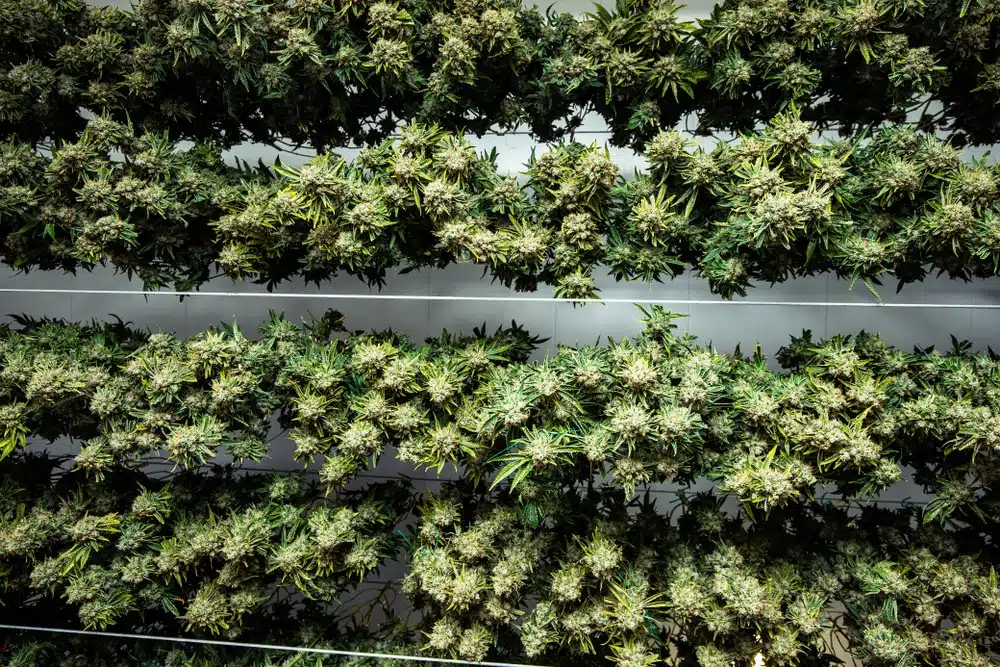
Optimal conditions for curing
The best humidity for curing weed is 55–60%, with a temperature of 64ºF. Ensure your buds remain in complete darkness and check on them regularly to ensure you maintain these conditions.
This water vapor level prevents fungus and mold from forming. If your flowers ever smell like ammonia, air your jars immediately to allow the cannabis to dry in a warmer environment for a few hours.
Also, only use one-quart containers, which should hold an ounce of dried buds. Bigger jars are more likely to encourage mold, don’t seal correctly, and could prevent proper curing.
Different methods of curing
We recommend the dry technique outlined above, but there are three other approved marijuana curing methods:
- Water cure: Submerge your harvest in water for a week. The H20 removes the chlorophyll and any unwanted plant material.
- Sweat cure: This option involves using plastic curing bags for weed, leaving it to mature in high humidity levels. The moisture reportedly enhances the trichomes but also increases your risk of developing bud-rot.
- Freeze-dry cure: Also called cannabis lyophilization, freeze your flowers before drying them to shorten curing to 24–36 hours.
Common mistakes to avoid
There are a few critical mistakes that could be your all-or-nothing between curing success or a flavor failure. Ensure you don’t make any of these errors:
- Curing weed in a ziplock bag: These packs seem attractive but ruin your harvest by pulling off the trichomes and giving blooms a chemical odor.
- Stuffing your jars too full: Loosely stack your buds to prevent deforming or crushing them. Adequate air should also surround them to break down sugars.
- Trying to cure flowers that are too dry: If your nugs feel brittle and crumbly, there won’t be enough moisture for curing and the process slows. Rehydrate them by adding humidipacks to your jars.
- Touching the blooms too often: Try not to over handle your cannabis while it’s maturing, as excessive touching could cause it to lose potency and flavor.
- Curing wet buds: High moisture levels could lead to mildew and mold, which ruins your crops and is dangerous to consume.
The benefits of proper drying and curing
Properly drying and curing your cannabis is an essential part of cultivation. Performing these steps affects the overall quality and characteristics of your weed. Let’s look at a few benefits of completing them.
- Increased potency: Drying and curing helps break down chlorophyll and other compounds that could interfere with the cannabinoids’ effects.
- Improved flavor and aroma: Completing these extra tasks allows the terpenes and flavonoids to develop fully.
- Smoother smoking experience: Well-dried and cured marijuana burns more evenly and produces a more flavorful inhale.
- Longer shelf-life: Store properly processed buds for up to two years without a loss in potency.
Tips for storing dried and cured cannabis
Preserve your labor of love by adequately preparing your cured flowers for long-term storage.
While aging is inevitable, the correct preservation techniques could slow it down. Here’s how to keep your weed safe from time and the elements.
Choose the right container
The best marijuana storage containers protect buds from temperature, humidity, oxygen, and light and support the structure of the plant material.
These factors make opaque mason jars with rubber seals your best bet for keeping your stash safe and fresh.
Avoid plastic, as this material could speed up aging and doesn’t guard against environmental fluctuations. It also collects static particles that damage the terpenes and trichomes and affect the buds’ natural aroma.
Optimal storage conditions
To keep your cannabis smokable for as long as possible, store it between 60 and 70ºF, with a relative humidity of 55–60%. It’s also important to keep your blooms out of direct sunlight and far away from any heat sources.
Ensure the container is airtight, as exposure to oxygen could cause cannabinoids to deteriorate and the terpenes to evaporate.
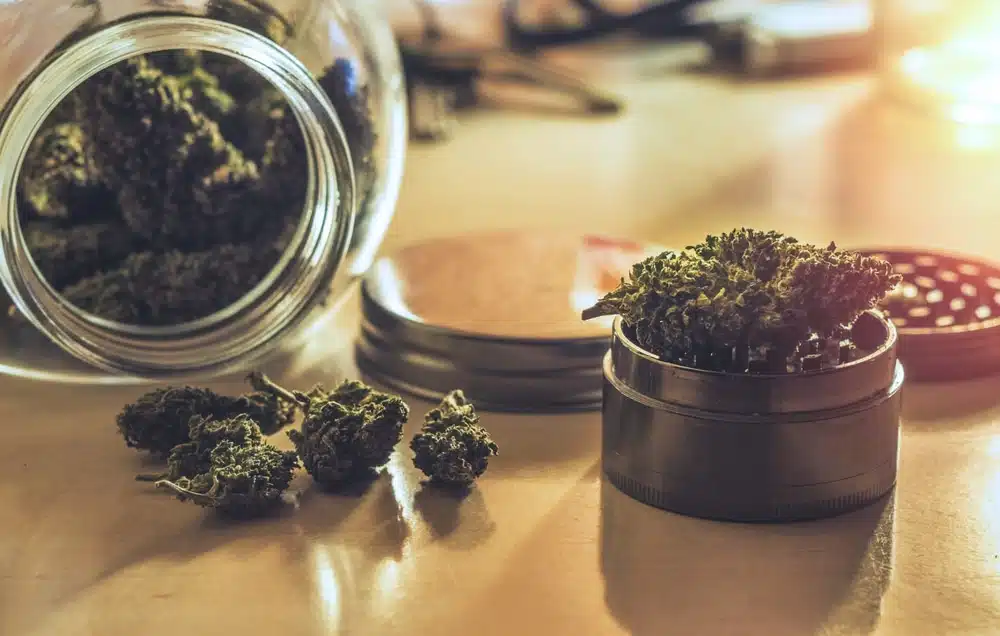
Common mistakes to avoid
Making these marijuana storage mistakes could cause your stash to lose potency or quality:
- Using the wrong sized container: Boxes that are too large can lead to air pockets and an increase in humidity levels. Small containers could compress the buds and damage trichomes.
- Exposing your weed to sunlight: Direct rays can break down cannabinoids.
- Storing in damp conditions: High levels of humidity encourage mold and mildew, which ruins your flowers.
- Keeping your buds with other strong-smelling items: Marijuana absorbs odors easily, so store it away from products like perfumes or cleaning agents that could give off pungent smells.
Perfectly processed buds every time
There’s no fast fix for drying and curing cannabis, and it’s not worth ruining your harvest by skipping these steps. Maturing your precious flowers locks in their most appealing features and ensures they stay as potent as possible.
Follow our drying and curing guide to achieve perfectly processed buds after every weed seed harvest and enjoy a flavorful, potent smoke. Be patient, as it’s worth waiting a little longer for a stash of the highest quality.

